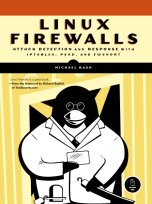IPTables::ChainMgr Used in PacketFence
19 February, 2009
 The IPTables::ChainMgr module is now used by
the PacketFence NAC system in the
latest 1.8.0 release. The module is used to build iptables rules that match on source MAC
addresses, set a connection mark, and jump packets into a dedicated MARK chain.
The IPTables::ChainMgr module is now used by
the PacketFence NAC system in the
latest 1.8.0 release. The module is used to build iptables rules that match on source MAC
addresses, set a connection mark, and jump packets into a dedicated MARK chain.
The latest release of the IPTables::ChainMgr module is 0.9 (available as of Feb 11th), and can be downloaded from CPAN. The changes since the 0.8 release are:
- Added Net::IPv4Addr prerequisite to Makefile.PL (patch submitted by Dominik Gehl).
- Updated perldoc documentation to properly discuss the delete_chain() API. The material about the $jump_from_chain was missing (Darien Kindlund reported this issue).
- Applied patch from Darien Kindlund to add the ability to specify the source MAC address via the --mac-source <addr> command line argument to iptables.

 Timing attacks can come up with some really interesting information, I
agree. However, I'm not aware of an application of timing attacks
against default drop packet filters to answer the question "is service
XYZ really running behind the filter". Sure, as an attacker, you can
collect timing differences between round trip times to all sorts of
devices that the target system may be communicating with, but I doubt if
there is a reliable way to infer that a _particular_ service is listening
as result. After all, the steady state of such as service may be that
there are no sessions at all; only the occasional administrative session
to run a couple of commands and then it exits. Note that I'm not
questioning whether it is possible to determine if a _system_ exists;
I'm questioning whether it is possible to determine if a particular
service running on a system exists. To do so, such a timing attack
would have to differentiate between "tcp port 22" communicating vs. "tcp
port 23", etc. I'm skeptical, and if people think it is possible, I
would like to see relevant papers that make this clear.
Timing attacks can come up with some really interesting information, I
agree. However, I'm not aware of an application of timing attacks
against default drop packet filters to answer the question "is service
XYZ really running behind the filter". Sure, as an attacker, you can
collect timing differences between round trip times to all sorts of
devices that the target system may be communicating with, but I doubt if
there is a reliable way to infer that a _particular_ service is listening
as result. After all, the steady state of such as service may be that
there are no sessions at all; only the occasional administrative session
to run a couple of commands and then it exits. Note that I'm not
questioning whether it is possible to determine if a _system_ exists;
I'm questioning whether it is possible to determine if a particular
service running on a system exists. To do so, such a timing attack
would have to differentiate between "tcp port 22" communicating vs. "tcp
port 23", etc. I'm skeptical, and if people think it is possible, I
would like to see relevant papers that make this clear.











